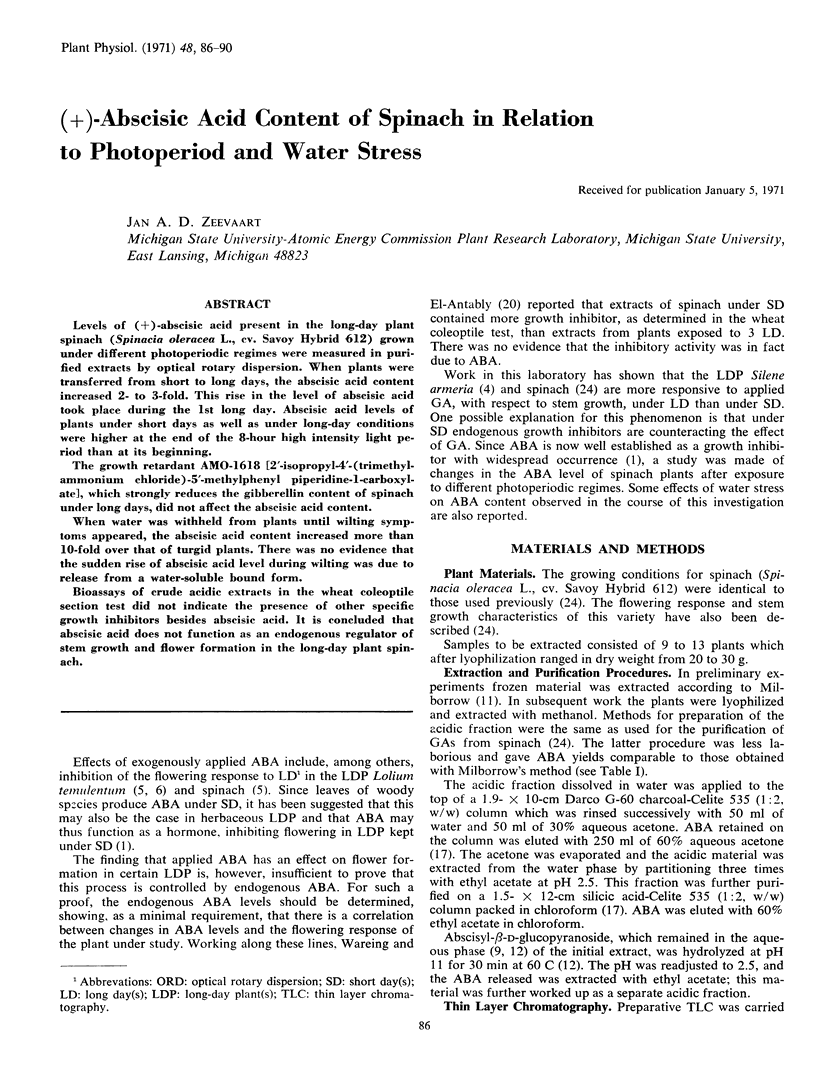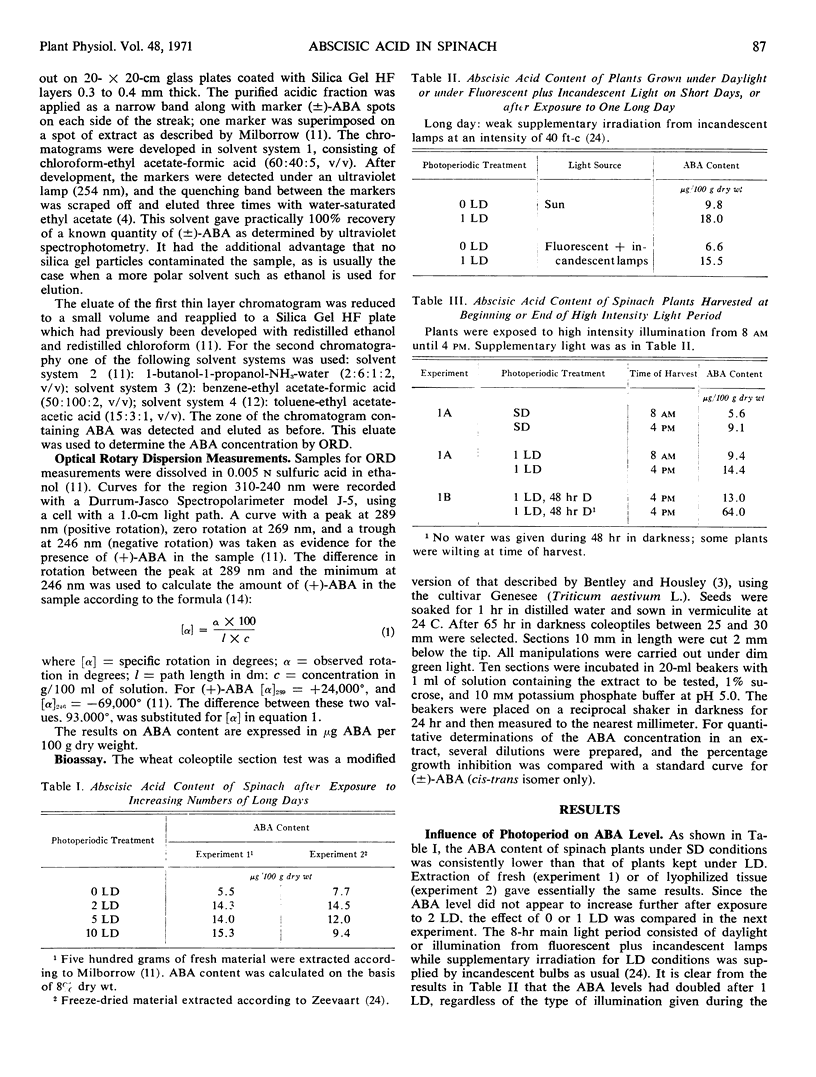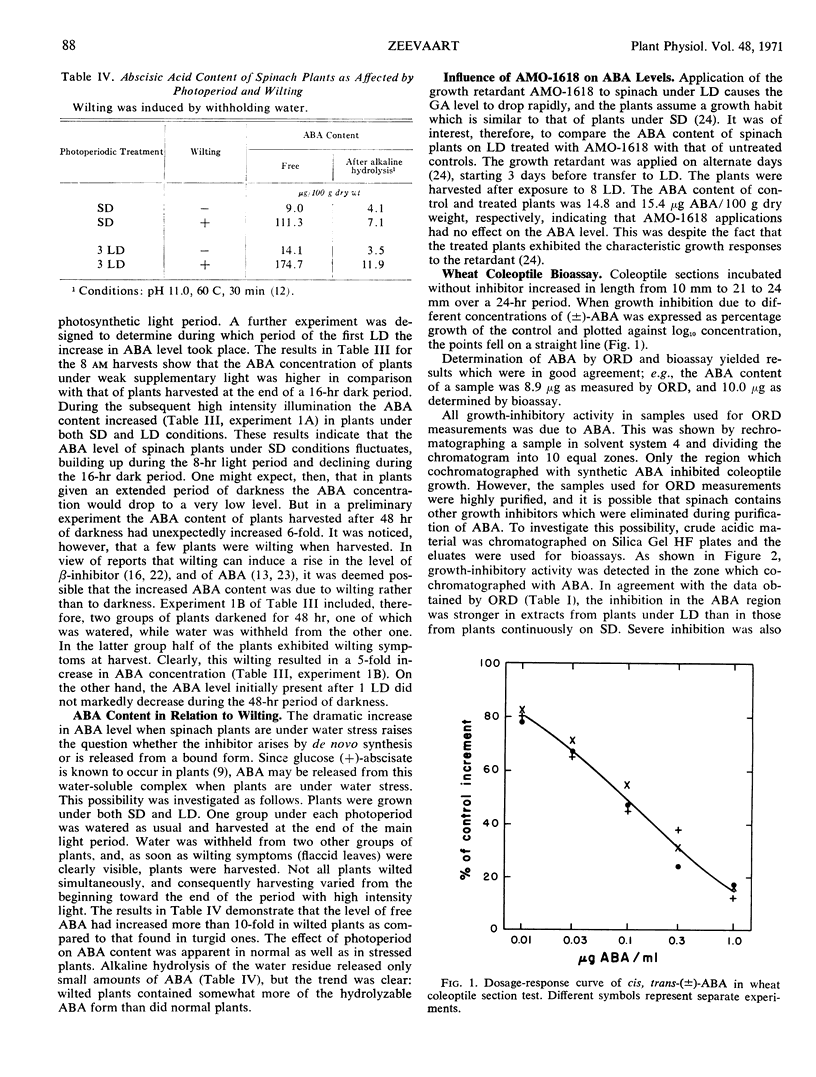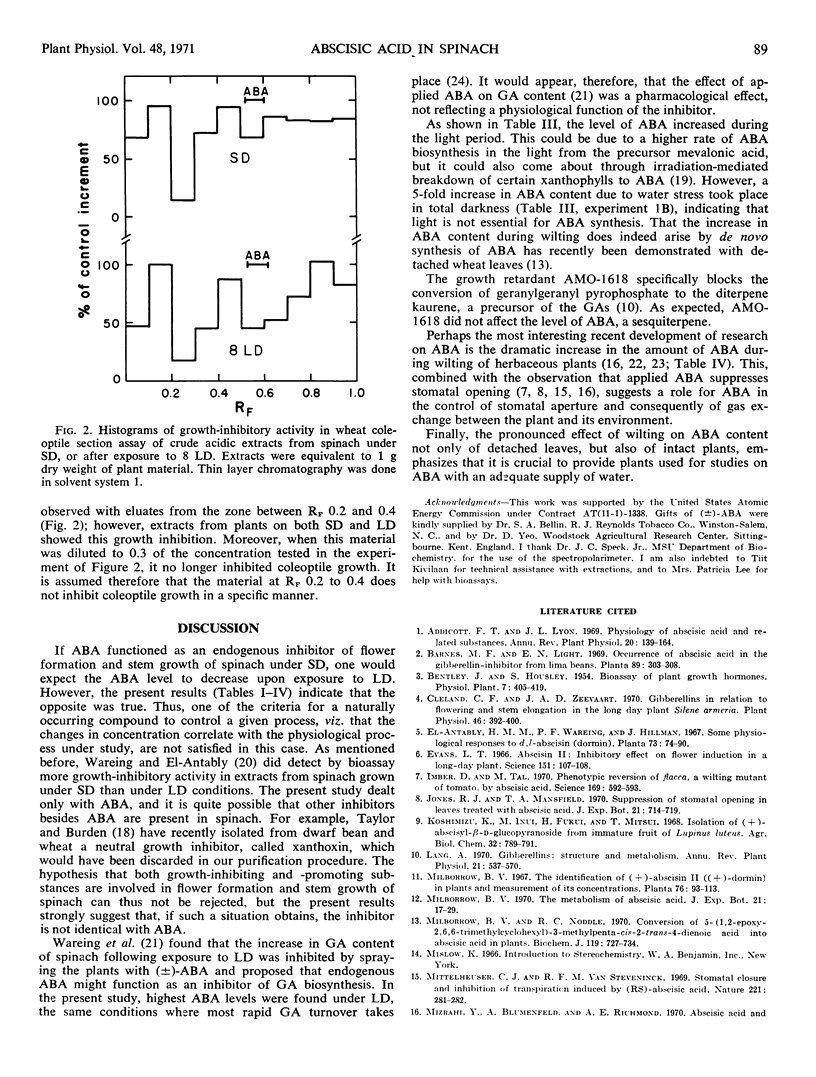Abstract
Levels of (+)-abscisic acid present in the long-day plant spinach (Spinacia oleracea L., cv. Savoy Hybrid 612) grown under different photoperiodic regimes were measured in purified extracts by optical rotary dispersion. When plants were transferred from short to long days, the abscisic acid content increased 2- to 3-fold. This rise in the level of abscisic acid took place during the 1st long day. Abscisic acid levels of plants under short days as well as under long-day conditions were higher at the end of the 8-hour high intensity light period than at its beginning.
The growth retardant AMO-1618 [2′-isopropyl-4′-(trimethyl-ammonium chloride)-5′-methylphenyl piperidine-1-carboxylate], which strongly reduces the gibberellin content of spinach under long days, did not affect the abscisic acid content.
When water was withheld from plants until wilting symptoms appeared, the abscisic acid content increased more than 10-fold over that of turgid plants. There was no evidence that the sudden rise of abscisic acid level during wilting was due to release from a water-soluble bound form.
Bioassays of crude acidic extracts in the wheat coleoptile section test did not indicate the presence of other specific growth inhibitors besides abscisic acid. It is concluded that abscisic acid does not function as an endogenous regulator of stem growth and flower formation in the long-day plant spinach.
Full text
PDF




Selected References
These references are in PubMed. This may not be the complete list of references from this article.
- Cleland C. F., Zeevaart J. A. Gibberellins in Relation to Flowering and Stem Elongation in the Long Day Plant Silene armeria. Plant Physiol. 1970 Sep;46(3):392–400. doi: 10.1104/pp.46.3.392. [DOI] [PMC free article] [PubMed] [Google Scholar]
- Evans L. T. Abscisin II: Inhibitory Effect on Flower Induction in a Long-Day Plant. Science. 1966 Jan 7;151(3706):107–108. doi: 10.1126/science.151.3706.107. [DOI] [PubMed] [Google Scholar]
- Imber D., Tal M. Phenotypic reversion of flacca, a wilty mutant of tomato, by abscisic Acid. Science. 1970 Aug 7;169(3945):592–593. doi: 10.1126/science.169.3945.592. [DOI] [PubMed] [Google Scholar]
- Milborrow B. V., Noddle R. C. Conversion of 5-(1,2-epoxy-2,6,6-trimethylcyclohexyl)-3-methylpenta-cis-2-trans-4-dienoic acid into abscisic acid in plants. Biochem J. 1970 Oct;119(4):727–734. doi: 10.1042/bj1190727. [DOI] [PMC free article] [PubMed] [Google Scholar]
- Taylor H. F., Burden R. S. Xanthoxin, a new naturally occurring plant growth inhibitor. Nature. 1970 Jul 18;227(5255):302–304. doi: 10.1038/227302a0. [DOI] [PubMed] [Google Scholar]
- Taylor H. F., Smith T. A. Production of plant growth inhibitors from xanthophylls: a possible source of dormin. Nature. 1967 Sep 30;215(5109):1513–1514. doi: 10.1038/2151513a0. [DOI] [PubMed] [Google Scholar]
- Zeevaart J. A. Effects of photoperiod on growth rate and endogenous gibberellins in the long-day rosette plant spinach. Plant Physiol. 1971 Jun;47(6):821–827. doi: 10.1104/pp.47.6.821. [DOI] [PMC free article] [PubMed] [Google Scholar]


